
An armor-piercing shell, armour-piercing shell in Commonwealth English, AP for short, is a type of ammunition designed to penetrate armor. From the 1860s to 1950s, a major application of armor-piercing projectiles was to defeat the thick armor carried on many warships and cause damage to the lightly-armored interior. From the 1920s onwards, armor-piercing weapons were required for anti-tank missions. AP rounds smaller than 20 mm are typically known as "armor-piercing ammunition", and are intended for lightly-armored targets such as body armor, bulletproof glass and light armored vehicles. The AP shell is now seldom used in naval warfare, as modern warships have little or no armor protection. In the anti-tank role, as tank armor improved during World War II newer designs began to use a smaller but dense penetrating body within a larger shell. These lightweight shells were fired at very high muzzle velocity and retained that speed and the associated penetrating power over longer distances.
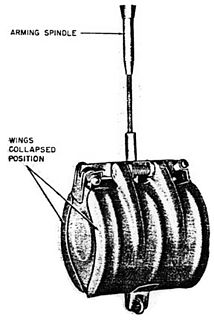
A Butterfly Bomb was a German 2 kilogram anti-personnel submunition used by the Luftwaffe during the Second World War. It was so named because the thin cylindrical metal outer shell which hinged open when the bomblet deployed gave it the superficial appearance of a large butterfly. The design was very distinctive and easy to recognise. SD 2 bomblets were not dropped individually, but were packed into containers holding between 6 and 108 submunitions e.g. the AB 23 SD 2 and AB 250-3 submunition dispensers. The SD 2 submunitions were released after the container was released from the aircraft and had burst open. Because SD 2s were always dropped in groups the discovery of one unexploded SD 2 was a reliable indication that others had been dropped nearby. This bomb type was one of the first cluster bombs ever used in combat and it proved to be a highly effective weapon. The bomb containers that carried the SD 2 bomblets and released them in the air were nicknamed the "Devil's Eggs" by Luftwaffe air and ground crew.

The AB 70-D1(Abwurfbehälter) was a cluster bomb dispenser used by the Luftwaffe during World War II.

The AB 250-2(Abwurfbehälter) was a cluster bomb used by the Luftwaffe during World War II.

The BDC 10 was a cluster bomb used by the Luftwaffe during World War II.
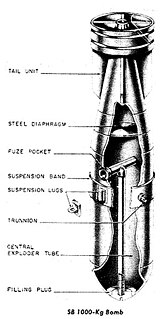
The SB 1000 (Spezialbombe) was a luftmine or aerial mine in English used by the Luftwaffe during World War II.

The SB 2500 (Spezialbombe) was a luftmine or aerial mine in English used by the Luftwaffe during World War II.

The SD 50 or thick walled explosive bomb in English was a fragmentation bomb used by the Luftwaffe during World War II.
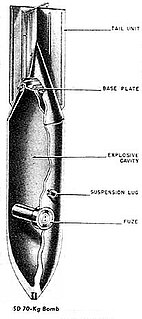
The SD 70 or thick walled explosive bomb in English was a fragmentation bomb used by the Luftwaffe during World War II.
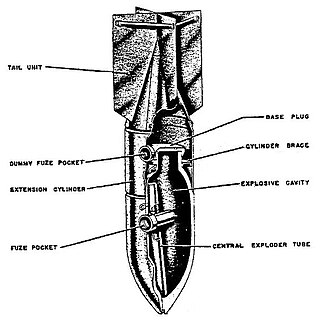
The SD 250 or thick walled explosive bomb in English was a fragmentation bomb used by the Luftwaffe during World War II.
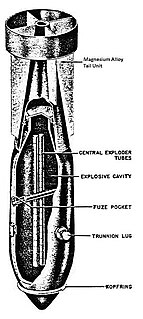
The SD 1700 or thick walled explosive bomb in English was a fragmentation bomb used by the Luftwaffe during World War II.

The PC 500 or cylindrical armor-piercing explosive bomb in English was a series of armor-piercing bombs used by the Luftwaffe during World War II.

The PC 1000 or cylindrical armor-piercing explosive bomb in English was an armor-piercing bomb used by the Luftwaffe during World War II.
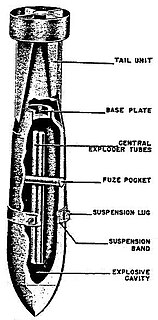
The PC 1400 or cylindrical armor-piercing explosive bomb in English was an armor-piercing bomb used by the Luftwaffe during World War II.

The PC 1600 or cylindrical armor-piercing explosive bomb in English was an armor-piercing bomb used by the Luftwaffe during World War II.

The SD 15 or thick walled explosive bomb in English was a fragmentation bomb used by the Luftwaffe during World War II.

The SBe 250 or concrete fragmentation in English was a fragmentation bomb used by the Luftwaffe during World War II.
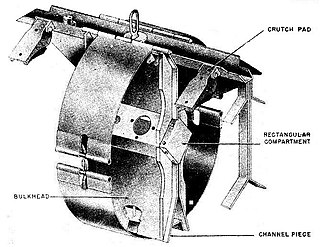
The AB 500-3A(Abwurfbehälter) was a cluster bomb used by the Luftwaffe during World War II.

The AB 500-1B(Abwurfbehälter) was a cluster bomb used by the Luftwaffe during World War II.
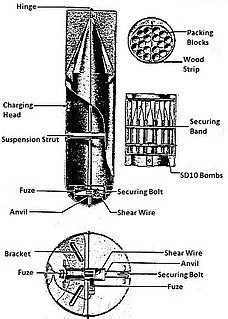
The AB 500-1(Abwurfbehälter) was a cluster bomb used by the Luftwaffe during World War II.




















